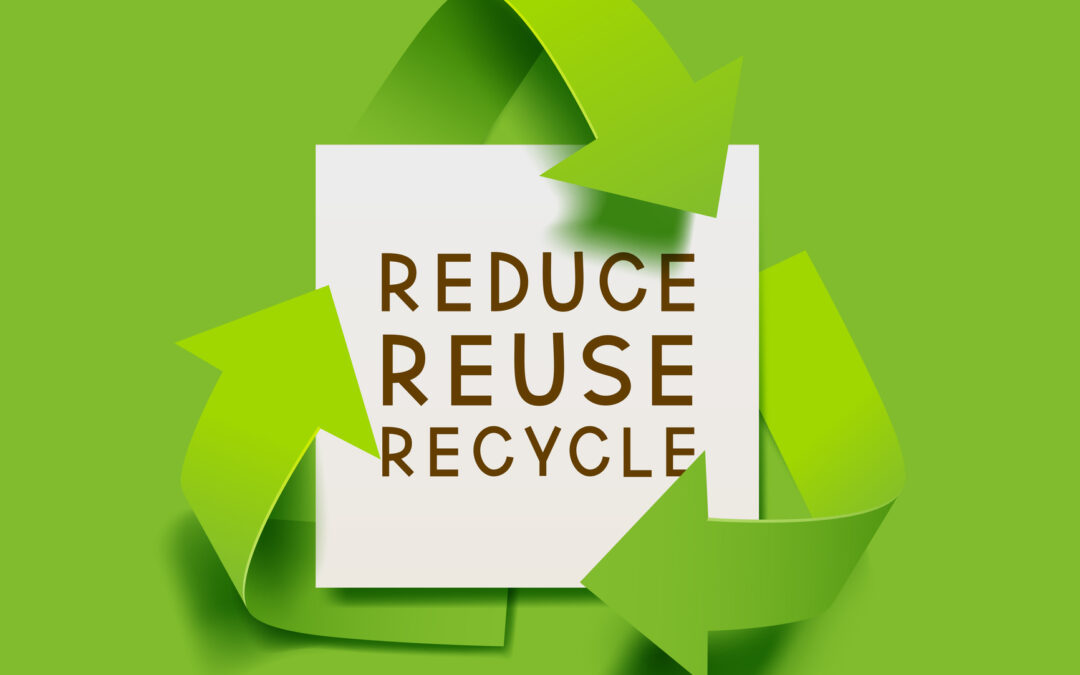I’ve heard it suggested that sustainability does not matter in the signage sector. “Signs last forever anyway” or “My customers don’t care about sustainability, only about price.” I’d agree that not all customers are the same and of course, there will always be certain types of customers, for whom price is the only thing that counts. However, I’d argue that sustainability – at least in the form of recycling – is of increasing importance to many of your customers and it makes increasingly good business sense to get this part of your proposition right.
Recycling and reusing materials in the signage trade creates a more sustainable industry. Beyond the environmental benefits, there are simple and common-sense economic advantages and a closer alignment with current client expectations.
After all, graphics for signs and trade shows are anything but hidden or low profile by design and so will come under scrutiny from all types of audiences.
1. Taking Responsibility
Recycling is the responsibility that we in the signage industry have towards the environment and a practical way to enact the circular economy. As critical components of advertising and marketing, signage must be rugged and, in some cases, weatherproof, but where possible made from materials that quickly decompose in a landfill or in the case of textiles from materials that can be shredded for use as another product when not needed any more.

The focus more recently has moved to developing PVC-free products, as suppliers understand that true recycling is growing in importance for all sectors.
2. Making More Profit
Getting cash for scrap aluminium is the most obvious financial benefit from recycling, but others are easily overlooked. Utilising aluminium composite board, Dibond sheets, or Perspex with recycled content leads to significant cost savings – this is mainly enjoyed by the manufacturer, but will in some cases filter down to the sign-maker. A benefit of improving operating efficiency is to reduce the amount of waste produced, and this leads to lower material costs. An example of this would be using software to nest shapes cut from sheet material, finding the most efficient way. Another consideration is Government incentives and avoiding taxes. In the UK there are a range of financial reasons from avoiding Landfill Tax to R&D Tax credits and grants and subsidies.
Reusing solvent UV ink cartridges, as is now quite common for example with Mimaki, results in lower operational costs along the supply chain. In the case of this brand of ink, a service is offered where the used cartridges are uplifted for free, emptied of residual ink in a controlled way, and refilled. They even offer 1 cartridge free for every 45 processed in this way. Reuse of ink cartridges in this way ensures they are in the hands of competent persons and avoids risks of hazardous inks getting into the environment or drinking water sources.

3. Saving Energy
The energy savings enjoyed by manufacturers who recycle aluminium, glass, paper and plastics are well-known. It is these savings that make the products commercially viable, and as energy costs trend upwards, this factor increases in importance. Resource conservation by recycling cuts down on non-renewable metals and oil-based plastics. It also cuts down on the water used in these processes, which although renewable, is a resource that needs management. The idea of reusing, recycling, and regenerating materials to cut waste and reduce strain on natural resources is frequently termed the circular economy, it is a vital part of viability for our trade rather than a ‘picture on the wall’ talking point.
4. Win & Retain Big Clients
Large brands and companies have had to evolve rapidly to a very fast news cycle where negative coverage of their brand on social media is a genuine concern. Organisations that are thriving by getting sustainability right have large budgets when it comes to the ‘feel’ of their marques and you want to be in on the action.
Increasingly products are being sold with a through-life costing and maintenance package rather than just the initial sale; some examples of this are Hilti power tools and Rolls-Royce aero engines.

Supporting an increasing number of high-worth clients like these, and hanging on to their trade is vital for your business to be a financial success and achieve the best goals that it can. The part that real and detailed ‘granular’ sustainability plays in client relationships has never been higher than it is now.
So what should I do next?
With sustainability and recycling, most businesses want to do something, but also want to keep things simple, so here’s a very short checklist of winning tactics:-
- Include recycled or recyclable options in your product range
- Make sure these products are very visible in your catalogue, point-of-sale, website or wherever you promote your business – they may not be your biggest sellers today, but they are fantastic for your image as a responsible and caring business that people will want to deal with.
Related:


